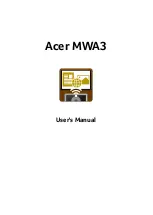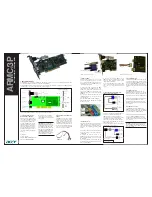
Fabric OS 5.2.x administrator guide 381
Fastwrite and tape pipelining
When the FCIP link is the slowest part of the network and it affects speed, consider using fastwrite and
tape write acceleration, called “tape pipelining.” Supported only in Fabric OS 5.2.x and higher, fastwrite
and tape pipelining are two features that provide accelerated speeds to FCIP tunnels in some
configurations:
•
Fastwrite accelerates the SCSI write I/Os over FCIP.
•
Tape pipelining accelerates SCSI write I/Os to sequential devices (such as tape drives) over FCIP, which
reduces the number of round-trip times needed to complete the I/O over the IP network and speeds up
the process. In order to use tape pipelining, you must enable fastwrite as well.
•
Both sides of an FCIP tunnel must have matching configurations for these features to work.
Unlike IPSec, compression, fastwrite, and tape pipelining features do not require any predefined
configurations. This makes it possible to enable these features by adding optional parameters such as
–c
,
-f
, or
-t
when you create FCIP tunnels.
Enabling fastwrite and tape pipelining
Fastwrite and tape pipelining require no parameters. Both features are enabled by turning them on during
the tunnel creation process. They are enabled on a per-FCIP tunnel basis. See ”
Configuring FCIP tunnels
”
on page 383 for details.
Constraints for Fastwrite and Tape Pipelining
Consider the constraints described in
Table 21-5
when configuring tunnels to use either of these features.
Table 91
Using fastwrite and tape pipelining
Fastwrite Tape
pipelining
Each GbE port supports up to 2048
simultaneous accelerated exchanges, which
means
a total of 2048 simultaneous
exchanges combined
for fastwrite and tape
pipelining.
Each GbE port supports up to 2048
simultaneous accelerated exchanges, which
means
a total of 2048 simultaneous
exchanges combined
for fastwrite and tape
pipelining.
Does not affect FICON traffic
Does not affect FICON traffic
Does not support multiple equal-cost path
configurations (see ”
Supported
configurations
” on page 381).
Does not support multiple equal-cost path
configurations or multiple non-equal-cost path
configurations (see ”
Supported
configurations
” on page 381).
Summary of Contents for AE370A - Brocade 4Gb SAN Switch 4/12
Page 18: ...18 ...
Page 82: ...82 Managing user accounts ...
Page 102: ...102 Configuring standard security features ...
Page 126: ...126 Maintaining configurations ...
Page 198: ...198 Routing traffic ...
Page 238: ...238 Using the FC FC routing service ...
Page 260: ...260 Administering FICON fabrics ...
Page 280: ...280 Working with diagnostic features ...
Page 332: ...332 Administering Extended Fabrics ...
Page 414: ...398 Configuring the PID format ...
Page 420: ...404 Configuring interoperability mode ...
Page 426: ...410 Understanding legacy password behaviour ...
Page 442: ...426 ...
Page 444: ......
Page 447: ......
















































